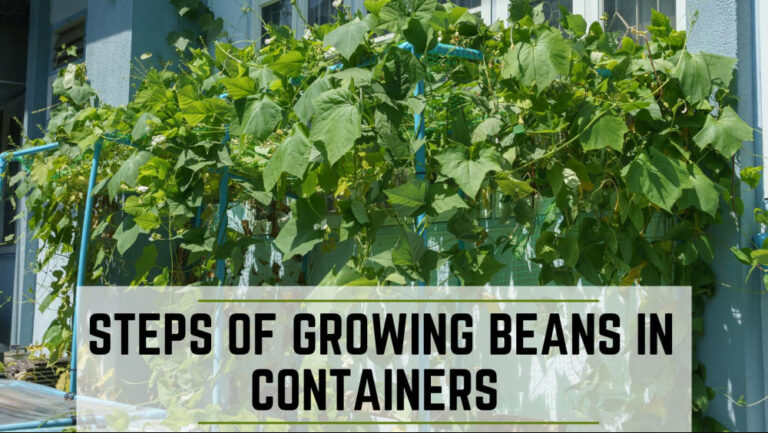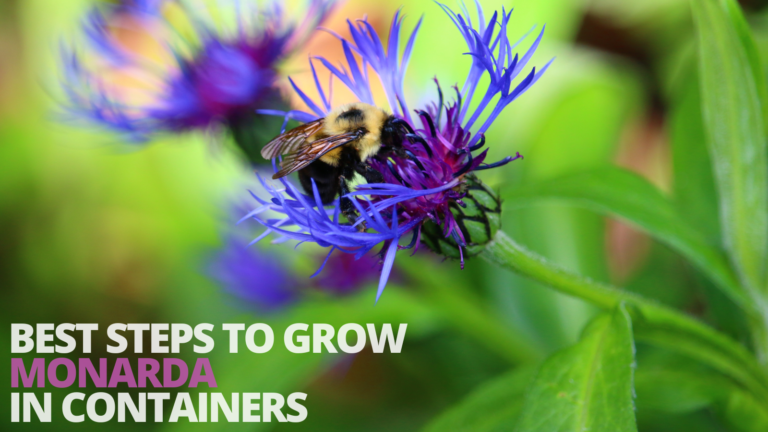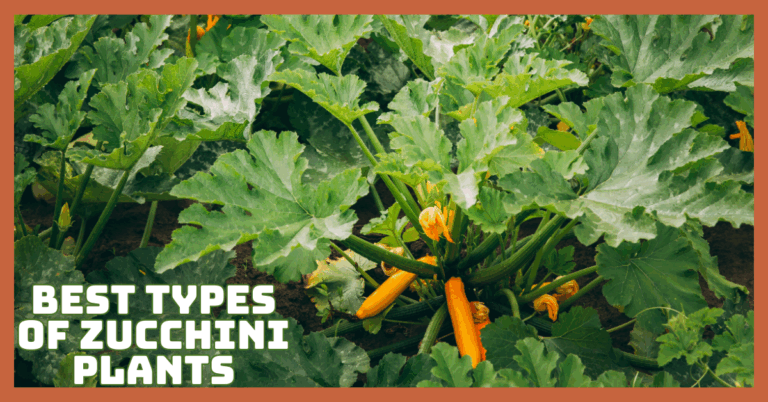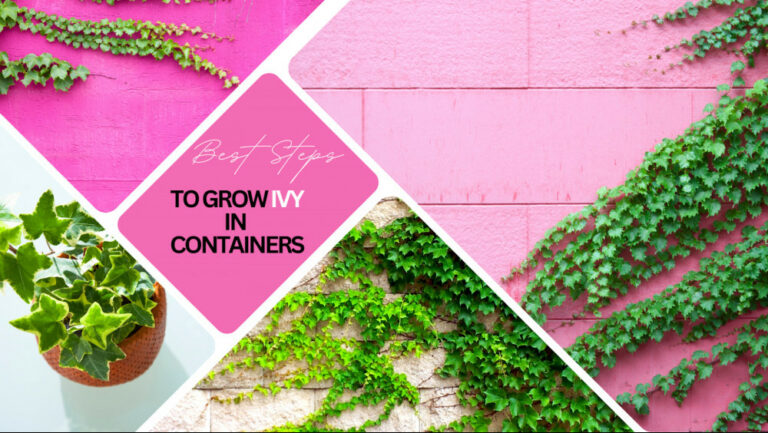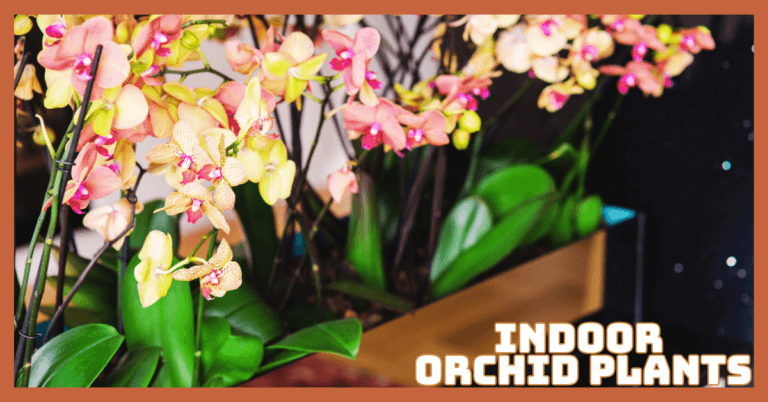Best Steps To Grow Dandelions In Containers
Best Steps To Grow Dandelions In Containers
The common dandelion (Taraxacum officinale), which is somewhat bitter, delicate with a flavour of spring, and edible from root to bloom, is more than simply a garden weed.
Dandelions can be cultivated indoors in containers as a salad green for a consistent harvest.
Dandelions are perennials that can survive in USDA plant hardiness zones 3 through 10.
Dandelions are an invasive, non-native weed that spreads quickly through copious self-seeding, but you can stop them from escaping by collecting their seeds.
I think the blog will help you grow dandelions in containers.
History & Origin Of Dandelions
Plant historians know that dandelion has played a significant role in traditional Chinese medicine for at least a thousand years.
Ancient Greeks, Romans, and Egyptians were familiar with the plants considered indigenous to the Mediterranean.
Dandelion roots and leaves were used medicinally as a tonic to eliminate toxins from the bloodstream and as a mild diuretic to enhance the performance of the digestive system.
Ancient doctors had little knowledge of nutrition and vitamin deficiency.
Still, they discovered that dandelions were helpful for many conditions, including toothaches, fevers, survey, warts, skin irritations, heartburn, gall bladder issues, diabetes, arthritis, anemia, constipation, and even dandruff and rashes.
Growing dandelions is a rich source of benefits that modern herbalists are aware of.
The advantages are not a surprise, and contemporary herbalists know that dandelions are a good source of calcium, potassium, zinc, iron, and vitamins C, E, and A. The beauty of the vegetation was also admired.
Dandelion blossoms produced a pale yellow dye, and the inner ribs of the leaves produced a purplish hue.
According to botanists, some types of dandelion are native to North America, and even today, many gardeners use plants to make delectable wine and nourishing tea.
However, according to historians, the common dandelion (Taraxacum officinale) and the red-seeded dandelion (Taraxacum erythrospermum) were brought to the New World by early European settlers because of their therapeutic and nutritional properties.
Dandelions have grown naturally in both varieties. Both varieties have naturalized, and growing dandelions may now be found nationwide, particularly in disturbed soil like farms, construction zones, by the side of the road, and lawns.
Types Of Dandelions
The French word “dent-de-lion,” or lion's tooth, which alludes to the leaf's sharp serrations, is where the English word “dandelion” is derived.
Dandelion blossoms are composed of many tiny flowers, or florets, as you can see if you look closely. Bees, butterflies, and other pollinators depend on the flowers for nectar.
There are more than 250 different species of dandelion plants, so unless you're a botanist, it could be challenging to distinguish between them. You should know about the best varieties to grow dandelions in containers successfully.
1. Common Dandelions
Most Americans picture common dandelions when they think of dandelion plants. This plant blooms from April to September and thrives in sunny environments.
This dandelion contains oval-shaped brown seeds and grows close to the ground. This plant's head is a vibrant, sunny yellow, and its leaves have a broad, jagged appearance.
The common dandelions can be eaten in all their components (except for the seeds.)
The leaves are used frequently in salads and other greens like mustard greens because they produce a nice green.
The roots can be dried and used as a substitute for coffee, and the heads are used to brew tea.
2. Red Seed Dandelions
The leaves' shape and the seeds' colour distinguish the Red Seed Dandelion from the Common Dandelion.
This plant can thrive in various environments, including areas with sun and shade. The plant's leaves range from 2 to 10 inches long and have thin tips.
The red-seed dandelion has edible leaves like the typical dandelion, and the heads can be used to make tea or coffee substitutes.
3. California Dandelions
A native of the Northern region of the United States, the California Dandelion is considered an endangered species.
Although they can be grown yearly in California, these plants bloom primarily from May through August.
These dandelions have sword-shaped leaves and green, red-veined, or yellow flower heads. This plant can be used to make a tea or coffee replacement.
4. Yellow Desert Dandelion
The Yellow Desert Dandelion thrives in the arid and desert regions of the Pacific Northwest. This plant has 3 to 5-inch leaves and can reach heights of 4 to 14 inches.
This plant's head has a deep crimson center and a bright yellow outside. In years when the desert receives a good quantity of rain, this plant creates a vibrant carpet across parts of the desert floor. This dandelion blooms primarily from March through June.
5. Horned Dandelions
The Horned Dandelions, native to Western North America and Canada, is also known as the Alpine Dandelion due to their preference for mountainous areas.
This plant has a yellow crown and broad, toothed leaves with rounded tips. This plant can be used as a substitute for tea and coffee.
6. Korean Dandelions
The Korean Dandelion grows between March and May and is indigenous to Korea, China, and Japan.
This plant has toothy leaves that can be up to an inch broad and a head that is a bright yellow colour. It is believed that this plant can be eaten.
7. Russian Dandelions
The rubber boot is another moniker for the Russian dandelion. The leaves of this plant closely resemble those of ordinary dandelions and thrive in both full sunlight and moderate shade. They bloom between May and June.
Grow Dandelions In Containers
Choose The Right Container
To grow dandelions in containers, you should find out the best pot. One dandelion plant fits perfectly in a 4- to 6-inch (10–15 cm) pot.
A drainage hole must be present in the bottom of the container. Cover it with a paper coffee filter to prevent potting soil from washing through the drainage hole.
It is advised to keep spacing of 6–9 inches (15–23 cm) between plants in rows 12 inches (30 cm) apart for the growth of dandelion seeds.
Soil To Grow Dandelions In Containers
The soil type is the one thing that dandelions don't care too much about. Dandelions will find a way to thrive whether your garden has sandy, loamy, rich, or clay-like soil. However, you'll want a mixture high in nitrogen to create nourishing and robust plants.
Sunlight
For your dandelions to grow, pick a sunny area. Choosing a sunny spot in your garden or planning to place potted dandelions in a sunny window can help your dandelions grow at their best. Find the sunniest area in your yard by exploring it several times throughout the day.
By setting a few rocks on the margins of where the sun is shining, you could, for instance, go outdoors at 8 a.m., 12 p.m., and 4 p.m. and record where the sun is.
Growing dandelion plants in some shade is preferable if you use them primarily for their leaves. The number of blossoms it produces and the leaves' bitterness will be lessened.
Water
The dandelion plants prefer continuous hydration. Thus, the soil should always be damp but not drenched when watering it.
Stick your finger 2 to 3 inches deep into the soil to see if it's dry or if you're unclear whether your plants need water.
Temperature And Humidity
Although dandelions may survive in soil as cold as 50 degrees Fahrenheit, they prefer a climate of at least 70°F to grow.
This explains why they frequently don't begin to appear as “weeds” in your grass until around mid-summer.
Furthermore, dandelions may grow in humid and relatively dry conditions and don't need any special humidity.
Fertilizer
Dandelions don't require any specific fertilizer, although they can benefit from mixing some organic debris into the soil.
It won't harm their growth if they also receive some fertilizer from neighbouring applications to other plants.
To prevent chemical contamination, only use organic fertilizer on adjacent crops if you intend to consume and cook with your dandelion plants.
Propagation And Sowing
Dandelion seeds can be purchased or gathered from the wild and sown in your garden.
You might find Italian dandelion if you look for dandelion seeds and greens (Cichorium intybus).
Even though this plant can also be cultivated as a green, and its leaves resemble authentic dandelions quite a bit, it is a kind of chicory.
Seedlings can be started inside four to six weeks before the final date of frost in your area. Spread the seeds one and a half inches apart in a deep tray or several pots with at least six inches of moist potting soil.
Because the seeds need light to grow, gently cover them with the medium; do not bury them wholly.
Keep the pots or tray damp but not soggy, and place them in a warm, sunny position. Within seven to twenty-one days, the seeds ought to sprout.
You can transplant the seedlings into your garden when they are three to four inches tall and the soil temperature is at least 50°F outside.
If you don't have a garden or yard, you may replant them in large pots and keep them on your balcony.
If you'd prefer to sow seeds outside, you can do so whenever after the last severe frost, provided the soil temperature is at least 50°F.
You can either scatter the seeds over the soil's surface and thin the seedlings, or you can spread the seeds six to twelve inches apart.
For better or worse, dandelion problems rarely arise. They won't have any issues growing and are resistant to many pests and illnesses that could affect other summertime plants or crops in your landscaping.
Maintenance
If you don't give dandelion plants any attention, they will grow well, but if you don't want them to take over your garden and lawn, remove all the blossoms before they set seed. If you intend to harvest the roots as well, doing this will make the roots bigger.
Dandelion Care
Although most people know how easily dandelions grow, few have tried to cultivate and take care of them.
The flowers are pretty simple to take care of. They will thrive in favourable (and unfavourable) circumstances, making them a reliable harvest for inexperienced and seasoned gardeners.
You can cultivate dandelion seeds in your vegetable garden or add them to your herb garden. They can also be sown directly in containers, allowing harvesting nearer to the kitchen.
For better or worse, dandelion problems rarely arise. They won't have any issues growing and are resistant to many pests and illnesses that could affect other summertime plants or crops in your landscaping.
Pests & Diseases Of Dandelion
Dandelions are relatively hardy plants that don't experience many different problems. Most dandelions can thrive in almost any season and resist all temperatures, occasionally even winter.
Dandelions are a type of “weed” that may grow in various environments and become unmanageable if left unchecked.
Their seeds can spread by the wind from one plant to another and thrive in a nearby environment.
Although dandelions grow most frequently in the spring, they can sprout in any season and at any temperature, including hot and cold conditions.
After the initial blooming season, many will reflower in the fall. When their growth cycle is uninterrupted, each plant will grow for 5–10 years and can get rather big.
Harvesting & Storing Of Dandelions
Dandelions can be used for various purposes, ranging from a diuretic to a component in winemaking.
But compared to other over-the-counter or doctor-prescribed drugs, dandelions are a very mild laxative that can be taken by people who prefer a more natural approach to therapeutic bowel treatment.
To preserve the freshness of your dandelion greens, trim the leaves off the plants and store them in airtight bags or containers in a cool, dry environment.
For uses like making salads and other fresh vegetable pleasures, these greens can also be kept “fresh” in the refrigerator for a few days or up to two weeks. Cooking or sautéing more preserved leaves for up to a month is an option.
To make a delicious mixture of vegetables served with carbohydrate and meat dishes to complete the meal and provide many excellent nutrients and nutritional benefits that might otherwise be missed entirely, cook or lightly sauté preserved leaves that will last up to a month on the stove.
Uses Of Dandelions
From Dandelion, we can get honey. The tincture can make Magnesium Lotion, Lotion Bars, Muffins, and much more. I've shared some of them here.
1. Dandelion Oil
Recipes that calm and treat chapped or cracked skin frequently call for dandelion flower-infused oil. It is also beneficial for other aches and pains, including sore muscles.
The filtered dandelion oil has a one-year shelf life. Place the uncovered jar into a small saucepan with a few inches of water.
Heat over a low burner for a few hours to prevent the water from evaporating—strain after removing from heat. The best technique to infuse coconut oil is quick.
For about 4 to 6 weeks, place the sealed jar of oil and dried dandelion blossoms in a cupboard and gently shake whenever you remember. Strain once the infusion period has ended.
Place the jar containing the dandelion flowers and oil on a sunny windowsill to accelerate the infusion. Infuse in a sunny window for about two weeks.
However, avoid storing flowers and herbs in the sun for extended periods of time because they will eventually fade.
2. Dandelion Flower Salve
Once your dandelion-infused oil is prepared, making this dandelion salve is simple. The oil must first be warmed in a double boiler.
A small bowl or glass Pyrex measuring cup can be placed on top of a pot with about an inch of simmering water to make a temporary double boiler.
Beeswax and dandelion oil are combined in a small bowl or glass measuring cup. Repeat the mixture, occasionally stirring, until the beeswax melts into the oil.
Mix the shea butter with the mixture before adding the optional essential oils. Pour the mixture carefully into tiny jars or tins, then wait for the salve to fully set up before using.
This recipe yields six 2-ounce tins or roughly 12 ounces of salve. This ointment works well for many aches and pains since dandelion blossoms have anti-inflammatory and pain-relieving characteristics. It is very beneficial for stiff and painful joints and muscles.
The dandelion salve is also calming and nourishing for dry, damaged, and irritated skin. It would be useful as a lip balm for dry lips.
This dandelion salve worked out beautifully, in my opinion. It has a beautiful scent and works wonders on my dry hands and feet. It is relatively simple to make.
3. Dandelion Vinegar
Don't pack the jar too tightly while gathering fresh dandelion blooms and leaves; thoroughly rinse them before adding them. Fill the jar with apple cider vinegar to the top and add more as needed.
Wrap the wax paper or plastic wrap around the jar's top before adding a lid. The acidity of the vinegar is prevented from corroding metal lids by adding this layer.
Store the covered jar in a dark cabinet for 4 to 6 weeks with occasional shaking. It only requires a strain before use!
4. Dandelion Syrup
I received this delicious recipe for dandelion flowers from Tina, a great reader from Denmark!
She was gracious enough to translate and provide me with a few authentic Scandinavian foraging recipes, like this one for dandelion syrup she produces every summer.
You'll need dandelion blossoms, green apples, water, sugar, and lemons to prepare it. Alternatively, you may add a rhubarb stick if you have some.
5. Dandelion Tea
Fresh flowers and leaves can be placed in a mason jar and covered with simmering water to make dandelion tea. After the tea has had time to cool enough to drink, filter it.
A traditional springtime herbal tonic is dandelion tea. It is beneficial for assisting with the secondary symptoms of a slow system, such as acne and constipation, and cleansing and detoxifying the blood.
Although some digestive issues can be helped by dandelion tea, if you have ulcers or other long-term health problems, use caution and speak with a doctor first.
The recommended dosage for the tea is one to three cups per day; start with a small amount and gradually increase it because it has laxative and diuretic effects that your body may need time to respond to.
Health Benefits Of Dandelions
1. Reduces Cholesterol And Triglyceride Levels
Some dandelion compounds may lower triglyceride and cholesterol levels, two major risk factors for heart disease.
In one test-tube study, dandelion leaf and root extract reduced the buildup of triglycerides in fat cells.
Likewise, a 4-week animal experiment revealed that giving rats dandelion leaf extract significantly decreased their total cholesterol levels and triglycerides.
Additionally, a previous rabbit study found that including dandelion roots and leaves in a diet high in cholesterol decreased cholesterol levels.
Animal and test-tube studies are the only types of research being done today.
2. Incredibly Nourishing
Dandelions are incredibly nutrient-dense plants that are fiber, vitamin, and mineral-rich from root to flower.
The nutrients A, C, and K are abundant in dandelion greens, which can be consumed raw or cooked. They also include small amounts of vitamin B12, folate, and E. And dandelion greens are a good source of iron, calcium, magnesium, and potassium, among other minerals.
The dandelion root is full of carbohydrate inulin, a type of soluble fiber found in plants and promotes the development and maintenance of good gut bacteria in your digestive tract.
In addition to being eaten whole like other root vegetables, dandelion root is frequently dried and made into tea.
3. Controls Blood Sugar
Two bioactive components found in dandelion that may aid in lowering blood sugar levels are chicoric and chlorogenic acids.
Studies on test tubes and animals suggest that these substances may enhance the muscles' absorption of glucose (sugar) and the hormone insulin, which controls blood sugar levels.
This procedure increases insulin sensitivity and decreases blood sugar levels.
In some animal studies, chicoric and chlorogenic acid also restricted the digestion of starchy, high-carb foods, which may further support dandelion's capacity to lower blood sugar levels.
More human research is required, even though these findings are encouraging.
4. Possesses Strong Antioxidants
Potent antioxidants are abundant in dandelion, which may account for many of its therapeutic properties.
Free radicals are molecules produced by normal metabolism, but if their levels in the body rise too high, they increase the risk of developing chronic diseases.
Antioxidants are substances that help neutralize free radicals. Consequently, antioxidants are essential for maintaining your body's health.
High levels of the antioxidant beta carotene are present in dandelions, which may offer protection against oxidative stress and cell damage.
They are also abundant in polyphenols, a different class of antioxidants that are primarily found in flowers but can also be found in the roots, leaves, and stems of plants.
5. Fights Inflammation
Dandelion may lessen inflammation thanks to some substances like polyphenols.
An immune system's natural reaction to injury or infection is inflammation. However, persistent inflammation may result in irreversible DNA and tissue harm.
In test-tube studies, cells treated with dandelion-derived compounds showed lower levels of specific inflammation-related markers.
In one study, the dandelion extract significantly reduced lung inflammation in mice with inflammatory pulmonary disease.
Even so, human research is required.
6. Lowers Blood Pressure
Despite some claims that dandelions may lower blood pressure, few studies have been conducted.
Because it can detoxify specific organs, traditional herbal medicine uses dandelion for its diuretic effect.
Western medicine employs diuretic drugs to eliminate extra fluid, which may help lower blood pressure levels.
Dandelion is a potent diuretic, according to an older human study. The study, however, was small and only included 17 participants.
Additionally, dandelion contains potassium, a mineral known to lower blood pressure in people with elevated levels. Because of this plant's potassium content, blood pressure may be affected indirectly.
7. PromotesLiver Health
According to some studies conducted on animals, dandelion extract may offer protection from liver disease and damage.
One study discovered that it mitigated liver injury exposed to sodium dichromate, a substance used to cause liver injury.
Other animal research has suggested that dandelion extract may lower extra fat stored in the liver and protect against oxidative stress.
8. Boosts Immune Health
According to some studies, dandelion may have antimicrobial and antiviral properties that could help your body's capacity to fight infection.
According to several test-tube studies, the dandelion extract significantly lowers the capacity of viruses to replicate.
Additionally, studies show that some active dandelions' active substances can defend against various dangerous bacteria.
Ultimately, additional human research is required.
9. Useful For Skin Care Treatment
In animal studies and test tubes, the dandelion extract has been shown to protect against sun damage, aging, and acne-related skin damage.
In one study, applying dandelion leaf and flower extracts just before or right after being exposed to UVB radiation—the radiation you get from sunlight—prevents skin damage. Dandelion root, however, did not have the same impact.
Dandelion root extract increased the production of new skin cells in an earlier test-tube study, which may help your skin's appearance as you age.
Older studies suggest that dandelion extract may reduce skin irritation and inflammation while boosting collagen synthesis. Certain types of acne may be prevented and treated with this help.
However, there is a shortage of current research on the effects of dandelion on skin health, and the existing studies are restricted to test tubes and animals.
10. Helps To Lose Weight
Although the evidence isn't conclusive, some research suggests that dandelion compounds may help with weight control.
According to some researchers, dandelion's capacity to enhance carbohydrate metabolism and decrease fat absorption may result in weight loss. Nevertheless, this hypothesis has not yet been validated by science.
According to a study on mice, dandelion extract may help people manage their weight by preventing fat absorption.
Chlorogenic acid, a substance found in dandelion, was found to reduce body weight, reduce fat accumulation, and change the levels of specific proteins involved in weight control in a further study on mice.
11. Improves Bone Health
Though some of its nutrients support the upkeep of sturdy, healthy bones, very little research has been done on the effect of dandelion on bone health.
The nutrients calcium and vitamin K, important for bone health, are abundant in dandelion greens.
One small study found a correlation between increased consumption of leafy green vegetables high in vitamin K and lower blood levels of osteocalcin, a protein in your bones.
This implies that consuming more leafy greens, like dandelion greens, may prevent bone loss.
The fiber in dandelion roots, known as inulin, may also help maintain strong bones by enhancing gut health and digestion.
According to some research, the antioxidants in dandelion and other greens may also play a significant role in bone health and prevent bone loss by reducing oxidative stress.
12. Used As An Anticancer
Dandelion extract's potential to stop the development of cancerous cells in various organ systems is perhaps one of the most intriguing health claims.
A four-week rat study revealed that administering dandelion root extract changed pathways responsible for preventing the growth and spread of breast cancer cells.
According to additional test-tube studies, the growth of cancer cells in the liver, colon, and stomach tissue may slow down by dandelion root extract.
13. Improves Digestion
Dandelion is frequently used in traditional medicine to relieve constipation and enhance digestive health.
According to an older animal study, rats given dandelion extract showed significantly higher stomach contractions and emptying rates.
Inulin, a prebiotic fiber shown to ease constipation and speed up digestion, is another prebiotic fiber abundant in the dandelion root.
Dandelion greens may also increase your fiber intake because they contain more than 3 grams of fiber in each cooked cup (105 grams).
Hemorrhoids and diverticulitis are just two digestive disorders fibre helps prevent by promoting bowel regularity.
Conclusion
Making dandelion tea does not require constantly being on your hands and knees in the garden. The flowers, leaves, and roots can be collected and dried each spring or fall for storage.
There are several methods for drying dandelion for tea. To dry the dandelions and stop oxidation, leave them in the sun.
You can roast them in the oven as an alternative. Roast the food for two to three hours at 250°F in the oven.
After drying your dandelion plants, store them in an airtight glass jar. Store the pot away from direct sunlight in a cupboard or cabinet.
Be sure to keep your dandelion seeds stored. Feel free to comment here if you need help growing container dandelions.
I trust you enjoyed this article on the Best Steps To Grow Dandelions In Containers. Please stay tuned for more blog posts to come shortly. Take care!
JeannetteZ
>>>Please click here to read my all-inclusive article about Container Gardening<<<
>>>Are you interested in homegrown herbs and medicine? Please click here to find out more about it!<<<
Your Opinion Is Important To Me
Thoughts? Ideas? Questions? I would love to hear from you. Please leave me your questions, experience, and remarks about this article on the Best Steps To Grow Dandelions In Containers in the comments section below. You can also reach me by email at Jeannette@Close-To-Nature.org.
Disclosure
This post may contain affiliate links. As an Amazon Associate and other affiliate programs, I earn from qualifying purchases at no extra cost to you. Read my full affiliate disclosure.
You might also enjoy these blog posts:
Best Steps To Grow Chrysanthemums In Containers
Best Steps To Grow Statice In Containers
Best Steps To Grow Cornflower In Containers
Best Steps To Grow Orange Lilies In Containers
Best Steps To Grow Snowflakes In Containers

























